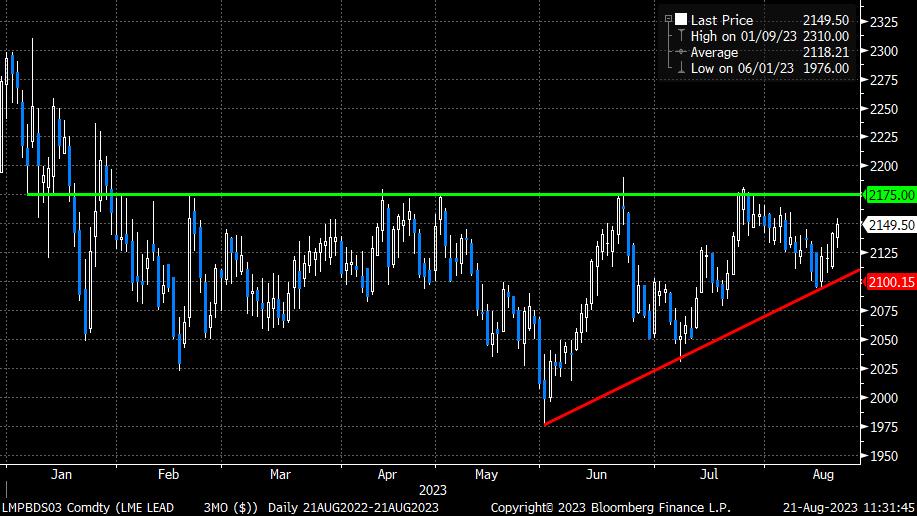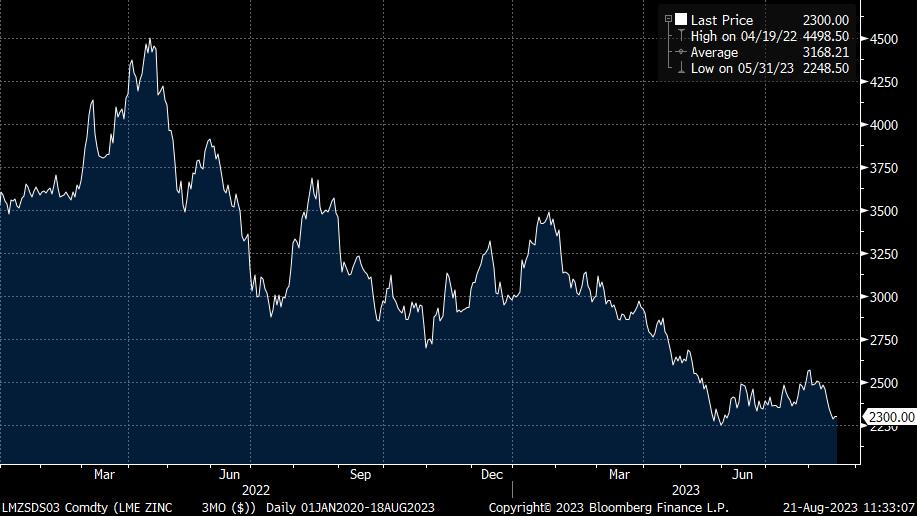CFDs are complex instruments and come with a high risk of losing money rapidly due to leverage. 72.2% of retail investor accounts lose money when trading CFDs with this provider. You should consider whether you understand how CFDs work and whether you can afford to take the high risk of losing your money.
- English
- Italiano
- Español
- Français
All About Base Metals
The following commodities, all of which are abundant base metals, are now available across Meta Trader 5, Ctrader and TradingView platforms.
Aluminium
Aluminium is an infinitely recyclable base metal with many commercial applications, ranging from tin cans for beverages, to kitchen utensils, and even aeroplane parts. As with any commodity, the price of aluminium hinges on the supply and demand factors influencing the market, and is highly dependent on the broader economy cycle, with demand for industrial commodities tending to be cyclical in nature, in contrast to the counter-cyclical behaviour often displayed by precious metals such as gold and silver.
Prices have been trending lower for much of the year in futures markets. Russia remains the world’s second-largest exporter of the metal, with the majority of the metal held in LME warehouses originating from Russia, but purchasers unable, or unwilling, to put it to use. Nevertheless, as markets have focused less on geopolitical risk over time, price has trended steadily lower, with concerns over falling demand in China potentially also exerting pressure. It is these factors, primarily, that traders should have on their radars when considering the metal’s medium-term outlook, though a fall below the September 2022 lows of $2,114 could open the door to further downside on a purely technical basis.

Nickel
Of all the metals mentioned in this column, nickel is probably the one to have garnered the most news attention of late, given the crisis that engulfed the LME in March 2022 when nickel trading was halted after prices more than doubled to $100,000/tn in around half a day, a move which was ultimately blamed on short covering by one of China’s largest producers.
Although trades filled during that period have since been voided by the exchange, it would appear that the market remains scarred by events of last year, with average daily trading volumes still around 50% lower than pre-crisis levels, and open interest having fallen by around a third. In turn, this has contributed to thinner liquidity, and thus increased levels of volatility, with erratic and inexplicable moves often being seen. For some, this has led to significant questions over the place of the LME contract as the global benchmark for price-setting.
In any case, prices have rapidly fallen from the highs mentioned above, with 3-month futures now trading just above the psychologically important $20,000/tn mark, a rounding error away from the lows seen in summer 2022, with the prospects for a prolonged recovery appearing rather slim, given ongoing concerns about a possible global recession, and continued weakness in the manufacturing sector.

Lead
Lead is a base metal which has been attracting increased amounts of attention of late, despite prices in the futures market having spent the majority of the last 5 years barely budging from the $2,000/tn mark.
Nevertheless, with the advent of electric vehicles, and increased governmental pushes towards making substantial progress in tackling climate change, lead usage may be set to remain relatively resilient in coming years, in contrast to a commodity such as gasoline. This is due to even EVs requiring the use of a lead-acid battery to power various circuitry and systems within the vehicle.
The resilient nature of demand could be a catalyst for upside in prices over the medium-term, though it would appear that a significant impulse is required to break above the top of the years-long range.

Zinc
Last, but by no means least, we have zinc. A base metal with a range of uses, zinc is found heavily in manufacturing processes, being used to galvanise steel in order to prevent rusting, while also being consumed heavily by the pharmaceutical industry. There is also ongoing discussion, debate, and research into whether zinc-based batteries may prove to be a more efficient way of powering electric vehicles, compared to the lithium-ion batteries already in use, or the sodium-based batteries that countries such as China are currently developing.
Despite this plethora of uses, and significant future potential, zinc has been in a steady downtrend of late, in common with the broader base metals complex. Once again, ongoing concerns about the faltering nature of the Chinese economy appear to be the primary cause of the slide, with even recent stimulus announcements doing little to lift prices. It seems a sustained pick-up in demand will be required to lift the market, and the complex more broadly; however, as the lagged effects of policy tightening are felt, and demand continues to wane, this feels some way off at present.

Related articles
The material provided here has not been prepared in accordance with legal requirements designed to promote the independence of investment research and as such is considered to be a marketing communication. Whilst it is not subject to any prohibition on dealing ahead of the dissemination of investment research we will not seek to take any advantage before providing it to our clients.
Pepperstone doesn’t represent that the material provided here is accurate, current or complete, and therefore shouldn’t be relied upon as such. The information, whether from a third party or not, isn’t to be considered as a recommendation; or an offer to buy or sell; or the solicitation of an offer to buy or sell any security, financial product or instrument; or to participate in any particular trading strategy. It does not take into account readers’ financial situation or investment objectives. We advise any readers of this content to seek their own advice. Without the approval of Pepperstone, reproduction or redistribution of this information isn’t permitted.
